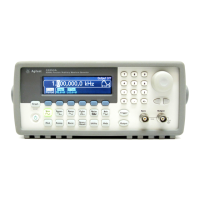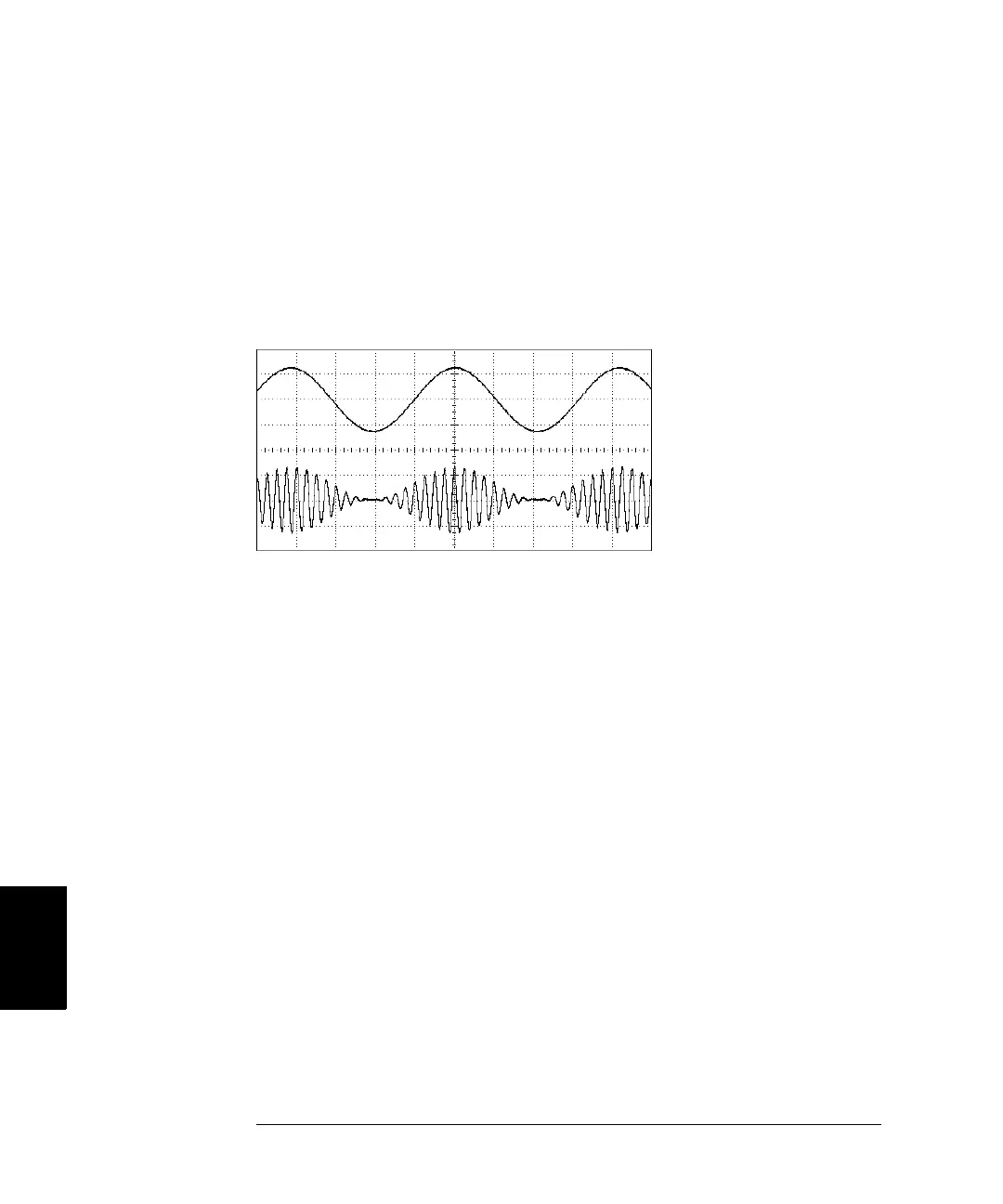310
Chapter 7 Tutorial
Modulation
7
Amplitude Modulation (AM) For AM, the DSP routes modulation
samples to a digital-to-analog converter (DAC) which then controls the
output amplitude via an analog multiplier. The DAC and multiplier are
the same as those used to set the function generator’s output level
(see “Output Amplitude Control” on page 304). This form of AM is called
“double sideband transmitted carrier” and is the type of modulation used
by most AM radio stations.
Amplitude Modulation
The amount of amplitude modulation is called the
modulation depth
which
refers to the portion of the amplitude range that will be used by the
modulation. For example, a depth setting of 80% causes the amplitude to
vary from 10% to 90% of the amplitude setting (90% – 10% = 80%) with
either an internal or a full-scale (±5V) external modulating signal.
Modulating Signal
Modulated Carrier
(100% depth shown)

